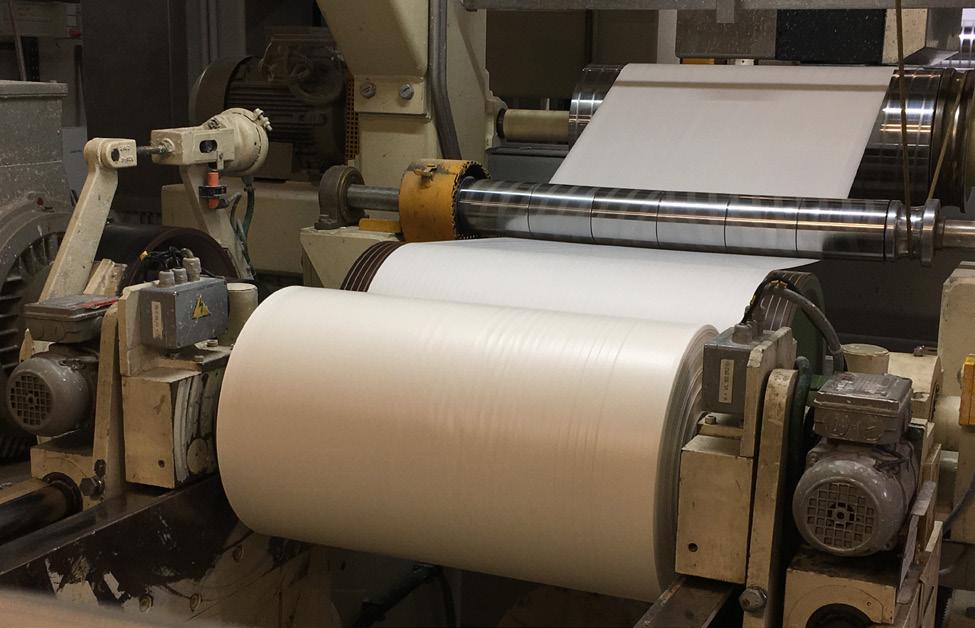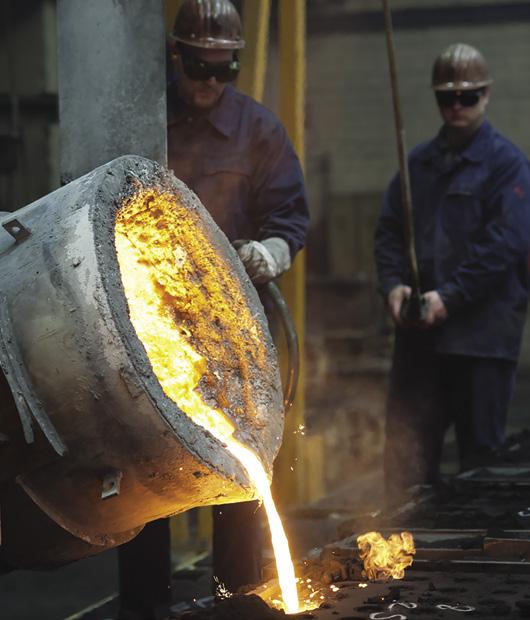
5 minute read
STRENGTH IN NUMBERS
BY GREG JONES
Advertisement
GREG JONES
SUN AUTOMATION GROUP VICE CHAIRMAN GREG.JONES@SUNAUTOMATION.COM With the ever-increasing competition for talent, what can companies do to attract the right individuals? It will require creativity. We will need to reward in ways that will encourage, motivate, and ultimately serve to help retain prospective employees. This is a challenge most companies are facing— critical as we move toward our goals.
JOE MORELLI HUSTON PATTERSON PRINTERS Having now entered my 10th year at CHAIRMAN SUN Automation, I can humbly say that
JMORELLI@HUSTONPATTERSON.COM I recognize and deeply appreciate the industry itself. It’s something I can’t quite express. I had spent my first 25 years in other related B2B spaces, from food and beverage to hardware and insurance. I can assure you that the greatest of these is packaging. What makes it even more special are the relationships and camaraderie TIM CONNELL A.G. STACKER INC. felt throughout—expanding beyond our SECRETARY individual jobs and continents. Having TCONNELL@AGSTACKER.COM the privilege to be part of AICC and engaged with other associations throughout the world, I have even more respect for our industry and the folks in it. We know we have a lot to offer prospective employees, and the industry has invested greatly in generating public awareness. Many fellow AICC JOHN BURGESS members created diverse work incentives PAMARCO DIRECTOR and in-house programs to entice new
JOHN.BURGESS@PAMARCO.COM recruits interested in R&D or green initiatives. We’ve partnered with colleges and engaged on social media to attract younger talent. There is a renewed commitment to employee recruiting overall. However, how do you reward and retain talent once it’s through the door? The initial thought goes to compensation. PAT SZANY However, I’ve come to realize it’s more AMERICAN CORRUGATED MACHINE CORP. IMMEDIATE PAST CHAIRMAN the opportunity to feel valued. We have PSZANY@ACM-CORP.COM been fortunate at SUN to hire individuals over the last five years whom I never thought we would be able to recruit. Early into conversations with new recruits, it was made clear that they wanted to be somewhere where their voices were heard and they could make an impact. We just needed to create the opportunity.
Another great reward and retention tool that many of you should consider is an employee stock ownership plan (ESOP). An ESOP allows for employees to be rewarded for company growth and establishes accountability throughout the organization. Employees gain shares in the company every year, so everyone has an interest in how we are performing financially because it impacts their individual bottom line. Having worked for a Fortune 200 company and now an ESOP, I can honestly say it is an entirely different mindset. It’s much easier for the individual to see the value in every job and to have the desire to work together as a collective, when the results are shared.
No matter how you recruit, retain, and reward your employees, stay vigilant in your efforts, and look for unique ways to separate from your competition. Whether it’s through an ESOP or value-driven initiatives that fuel employee growth and training, it’s important to understand that employees want more than a paycheck. It’s our job as leaders to help them feel valued and create an atmosphere in which they see the potential in giving their time and talent to organizations like ours.
Greg Jones is executive vice president at SUN Automation Group and is vice chairman of AICC’s Associate board.
Capacity Calculus for the Converter
BY MITCH KLINGHER
Even the largest independent converters are pretty small players in the overall world of paper and packaging. The marketplace is dominated by large integrated producers that control enough of all the papermaking resources to be considered an oligopoly. We know this because it seems that we have the ability to measure paper making capacity to the nearest pound. But what about our capacity to manufacture corrugated sheets? What about our capacity to convert corrugated sheets into finished boxes? Can any of this be measured accurately? If we knew how close we were to these capacities, would it affect decision-making?
Last year was characterized by the largest price increases and highest levels of profitability that I have ever seen among independent converters—and I see a lot of data. The key question is whether these levels of profitability are sustainable. In my experience, independent converters always pick up short-term profit gains when the price of paper goes up rapidly, and the past year has been no exception to this rule. Paper prices always seem to backslide when there is a series of rapid price increases, and when this happens, independent converters generally begin to lose margin. Is this what is going to happen in 2022 and 2023? Even in a market dominated by a small number of paper producers, the fundamental laws of supply and demand always seem to have the final say. If we accept the premise that the integrated producers have a vested interest in keeping available domestic supply as tight as possible, then what are the key factors to look at to help us predict future performance and make solid decisions with respect to the marketplace?
Paper Supply and Availability
The overall domestic supply for containerboard is expected to grow by at least 10%
over the next few years. Producers have kept supply as tight as possible by exporting tonnage, often at little or no profit. During the past year, export tonnage dropped dramatically, partly because the spike in demand caused a real short-term paper shortage here and partly because new tonnage is coming online rapidly in almost all export markets. In my opinion, the integrated producers will continue to show the discipline required to keep supply tight enough to continue increasing prices.
Demand for Packaging
Demand has been off the charts for the past 18 months, most likely fueled by all of the government stimulus payments, which are ending. It also seems unlikely now that the Democrats will be able to pass any more spending bills that are even close to what they originally proposed, so it is likely that the pace of demand will slow or even backslide somewhat. However, in the absence of an overall recession, there is likely to be continued growth in the demand for consumer products, nondurable goods, and all other sectors of the economy that utilize paper-based packaging.
Continued Inflation in the Overall Economy
The global supply chain problems that we have all been experiencing are real, and there don’t seem to be any quick fixes for them. Here again, the fundamental laws of supply-demand indicate that when supply is limited, prices tend to go up. In addition, with the Federal Reserve planning to raise interest rates, the cost of capital will increase, thus adding fuel to the need for companies to raise prices. I think those of us who lived through the 1970s will tell you that once this pattern starts, it is hard to reverse, so my feeling is that inflation is going to be part of this calculus for the foreseeable future.











